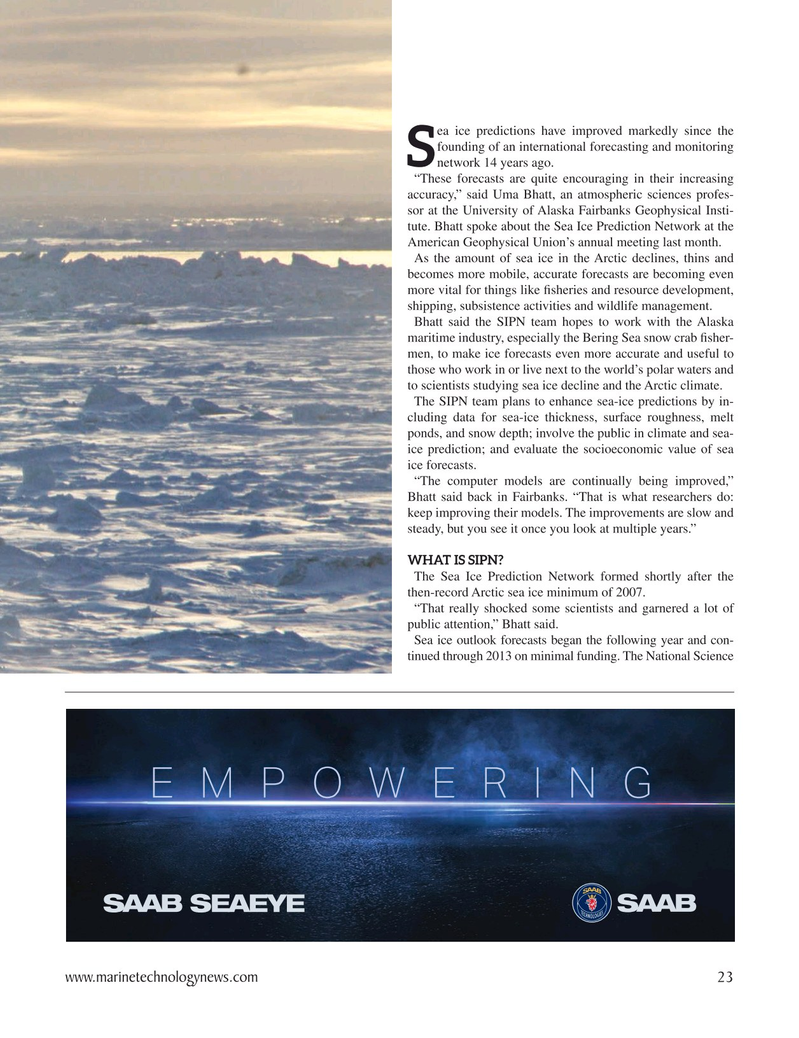
Page 23: of Marine Technology Magazine (January 2022)
Read this page in Pdf, Flash or Html5 edition of January 2022 Marine Technology Magazine
ea ice predictions have improved markedly since the founding of an international forecasting and monitoring
S network 14 years ago.
“These forecasts are quite encouraging in their increasing accuracy,” said Uma Bhatt, an atmospheric sciences profes- sor at the University of Alaska Fairbanks Geophysical Insti- tute. Bhatt spoke about the Sea Ice Prediction Network at the
American Geophysical Union’s annual meeting last month.
As the amount of sea ice in the Arctic declines, thins and becomes more mobile, accurate forecasts are becoming even more vital for things like ? sheries and resource development, shipping, subsistence activities and wildlife management.
Bhatt said the SIPN team hopes to work with the Alaska maritime industry, especially the Bering Sea snow crab ? sher- men, to make ice forecasts even more accurate and useful to those who work in or live next to the world’s polar waters and to scientists studying sea ice decline and the Arctic climate.
The SIPN team plans to enhance sea-ice predictions by in- cluding data for sea-ice thickness, surface roughness, melt ponds, and snow depth; involve the public in climate and sea- ice prediction; and evaluate the socioeconomic value of sea ice forecasts.
“The computer models are continually being improved,”
Bhatt said back in Fairbanks. “That is what researchers do: keep improving their models. The improvements are slow and steady, but you see it once you look at multiple years.”
WHAT IS SIPN?
The Sea Ice Prediction Network formed shortly after the then-record Arctic sea ice minimum of 2007.
“That really shocked some scientists and garnered a lot of public attention,” Bhatt said.
Sea ice outlook forecasts began the following year and con- tinued through 2013 on minimal funding. The National Science
EMPOWERING www.marinetechnologynews.com 23
MTR #1 (18-33).indd 23 1/25/2022 10:00:14 AM

 22
22

 24
24
